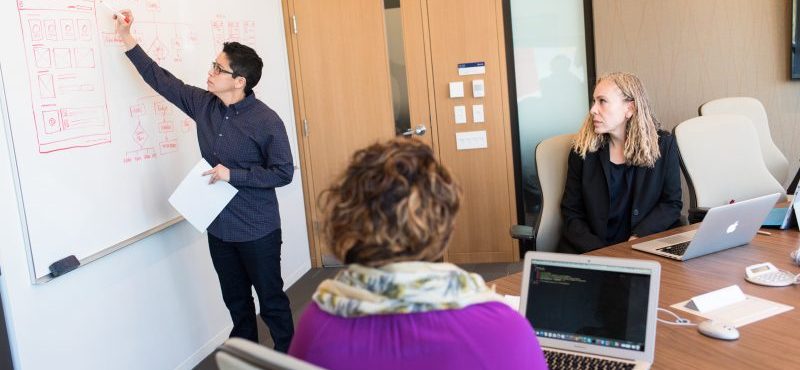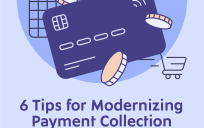by John L Pulley
The primary challenge for government agencies in the post-pandemic era is to capitalize on a rare opportunity to overhaul the way agencies execute their missions – from completing simple tasks to managing complex programs.
Despite ongoing modernization efforts, many government organizations have been stuck in a top-down, linear style of workflow management. This type of approach has created work silos and impeded productive cross-collaboration.
A secondary challenge is resisting the impulse to declare victory and focus on getting “back to normal.” The successful shift of workers to remote work has been a major accomplishment but stopping there would be premature – and a missed opportunity to modernize government operations. The agility and flexibility that remote work unleashed can be captured and extended in the office and in more familiar telework patterns.
To help employees become more productive, agile, collaborative and effective wherever they work, agencies need to bring modern workflows to three key areas of work:
Task and Small Group Work Management
Individual task and small group work management covers the lifecycle of a task, from planning and tracking to execution. That includes:
- Prioritizing actions
- Collaborating with others
- Setting deadlines and task assignments
- Tracking, monitoring and reporting on status
It also covers those smaller projects that might have shorter deadlines or don’t need a large set of resources.
“Historically, in government, the project management layer has been well-tooled,” said Jim Dodson, Public Sector Sales Lead at Atlassian. Not the same can be said for “the other two layers, a step higher and a step below,” he said.
Optimizing how this work is managed can add hours back into the day for workers and create whole new workflow efficiencies. Poor task and work management results in missed deadlines, cost overruns and an increased burden across the team.
Project Management
The middle type of government work is often the backbone of any agency’s strategic mission. It focuses on managing complex, highly collaborative projects across multiple departments. This kind of project management involves long-running programs, complex interrelated workflows, multiple stakeholders and auditing.
It’s the essential “tracking and execution of work and connecting it with the overall program,” Dodson said.
Given the complicated nature of government project management, project teams need agile, secure, easy-to-use tools that improve collaboration and intelligently automate the tracking of tasks, milestones, deadlines, assets and even finances.
Complex Program Management
The program management layer of government work comprises oversight and analysis of tasks, work and projects that support strategic and mission-critical initiatives. Complex programs have many stakeholders and subprojects, requiring the aggregation of team data to track and assess resources, costs and risk.
“Government agencies are still struggling with accountability and transparency into the work that they’re doing and being able to tie it to the overall strategy of the organization,” Dodson said.
What’s needed is a “platform that connects all those layers together to give a much broader level of transparency and accountability of the work that’s being done, with the ability to drill down to the individual task level if needed,” he said.
This ensures that not only are individual tasks being completed and projects are being completed in a fundamental way but that the overall program is meeting its budget objectives and timetables.
Solution: Work-Specific IT Tools
Advancing government capability and effectiveness demands workflows that are more:
- Efficient
- Collaborative
- Transparent and connected to the mission
- Better integrated throughout an agency
Effective IT tools support day-to-day individual task and small group work management and essential project management functions. The most effective tools, however, go beyond supporting the different types of work done by government agencies to provide a holistic, mission-centric view of workflows and processes. They bridge the “disconnect between project or program management and mission success,” Dodson said.
Integrating task, project and program management enables greater organizational visibility, enhanced communication and cross-team collaboration.
A platform that connects all those layers together provides a broader level of transparency and accountability of the work being done – as it’s happening. A connected platform supports completion of individual tasks and projects while ensuring that the larger program meets budget objectives and timetables. Agencies should be able to see all of that progress in real time across a single platform.
“Managers and executives need transparency and accountability,” Dodson said. “The only way they’re going to get that in a distributed world is through collaboration tools that provide transparency and the tracking of work to achieve accountability.”
Advanced tools “connect the strategy, objectives and goals of the organization to team-level work and the overall strategy of the organization,” he said.
Robust solutions help teams overcome the challenges that are a drag on mission attainment, including poor transparency, lack of accountability, the inability to consistently connect the dots of strategy, goals and objectives and insufficient timelines for tracking objectives and work that’s performed in support of the overall program.
“That’s probably the largest disconnect that we see today,” Dodson said.
This article is an excerpt from GovLoop’s report, “How Agencies Streamline Operations With Agile Workflows.” Download the full report here.





Leave a Reply
You must be logged in to post a comment.